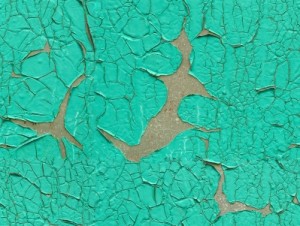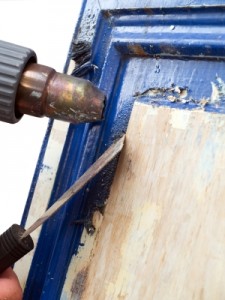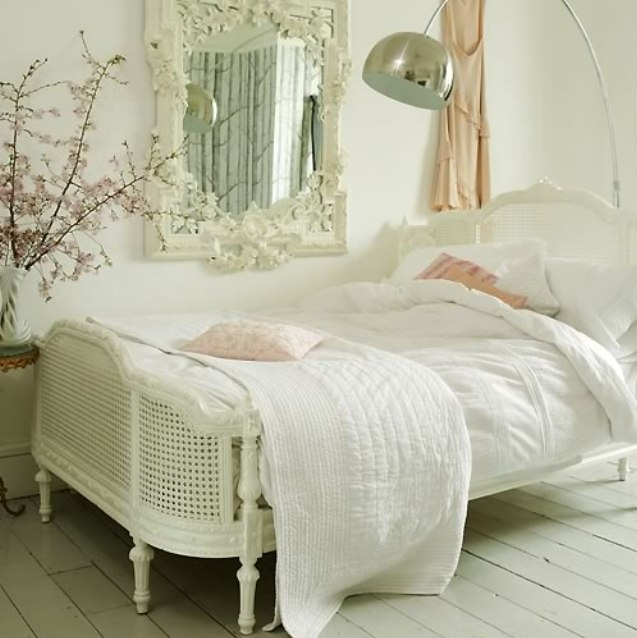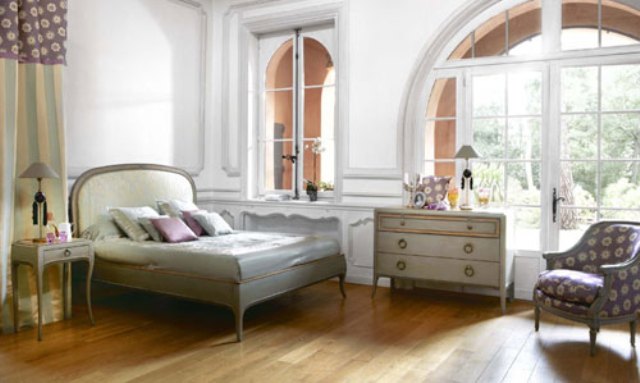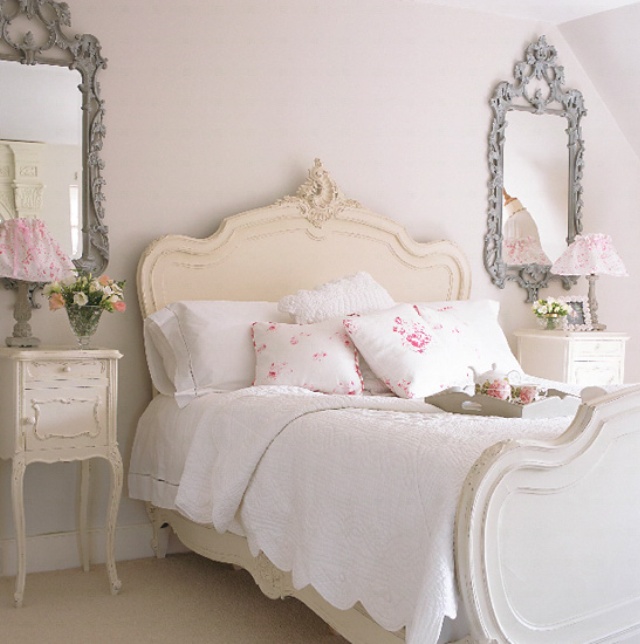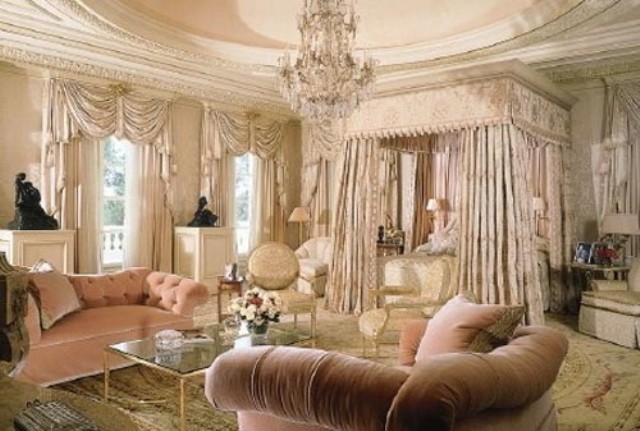Home-my-Home |
- Опасные материалы домочадца: Краска руководства
- Плантаторы СИД Rotoluxe напольные
- Accent стена с декоративной плиткой
- Естественные каменные типы настила для вашей кухни: Как они штабелируют вверх?
- Американский институт отпусков архитекторов (AIA) 2010 домашних тенденций конструкции
- 30 французских спен типа
- Более большая ванная комната через методы освещения
- Строить миниатюрный дом для искусства
- Скажите здравствулте! к HELOC и сделайте большие домашние улучшения возможно
| Опасные материалы домочадца: Краска руководства Posted: 30 Sep 2010 09:00 AM PDT
Lead paint exposure Most commonly, lead affects unborn and developing children. It can delay physical and mental development and result in lower IQ, shorter attention spans and increased behavioral problems. The younger the child is, the more he is at risk. In addition to greater vulnerability to developing tissue damage, children under the age of six are far more likely to chew on things that may have lead paint, like toys or crib bars, and less likely to wash their hands after touching something coated with dust that contains lead. Adults can also suffer from exposure to lead paint. Lead poisoning in adults manifests a wide range of symptoms including high blood pressure, low sperm count, joint and muscle pain, memory loss, and digestive issues. These symptoms are easily mistaken for other ailments. Where lead is found?
Demolishing walls can also be an issue, since the dust created by any process can throw lead-laden dust into the air. For your family’s health and safety, before renovations on an older home, test the paint for lead. You have several options for testing, including professional testing in your home, sending paint chips to a lab for testing, or DIY. Purchasing a testing kit is the least expensive option and is regarded to be fairly reliable, but if you aren’t satisfied with the results, sending samples to a lab is very reliable and costs $20 to $50 per sample. Most health departments offer screening for lead poisoning. If you suspect your children have been exposed, live in an area with older homes in deteriorated condition, or note behavioral or health changes in your kids, have them tested. The symptoms of lead poisoning are very similar to a number of conditions, and the only way to diagnose the problem is by medical testing. New laws concerning renovation and repair What the new laws mean to you?
Using a heat gun is a typical method of stripping old paint before repainting. Heating lead paint releases the lead into the air as a gas that can be inhaled during the process, but the danger doesn’t end there. As the gas cools, the lead condenses back into a solid and falls, coating everything it touches with what appears to be ordinary dust: the ground, your kids’ toys, your plants and trees, and if you have one, your garden. When it rains, this lead mixes with the rainwater and some of it seeps deeper into the ground. Eventually, a percentage will reach the water table. Contamination from one house may not be an issue, but there are millions of houses, and whole neighborhoods contaminated with lead paint. Another method of paint removal is blasting with pressurized water. This usually results in large flakes of contaminated paint falling into the yard around your house, and it removes only loose paint, it does not strip all paint. Scraping causes the same issue. Sanding throws dust into the air to be breathed in and mix with the soil. One of the main issues with soil contamination is that it’s not going anywhere. You may not have children in the house now, but what about 20 years from now? Homeowners have a responsibility to grandchildren, future homeowners, and the surrounding community. The new laws require painting contractors to wear protective clothing for their own safety, to use paint removal methods that create the least amount of contamination possible, to remove paint debris caused by the process and to vacuum or mop up all the dust left behind by the renovation process. In addition, they are required to document the process and test the quality of the air. Minimizing exposure
The bottom line Before embarking on DIY projects in an older home, evaluate the situation for potential dangers. Have the paint tested, and if it is positive for lead, check the EPA recommendations for professionals. If you’re an experienced do-it-yourselfer, you can follow the same procedures and do the work using the proper gear and equipment. Hazardous Household Materials: Lead Paint is a post from: BuildDirect. We cover a variety of home improvement products including laminate flooring, hardwood floors, bamboo flooring, tile, decking and more. We also offer a wide range of info on interior design, housing trends, home how to, green building and living, and more. Related posts:
|
| Плантаторы СИД Rotoluxe напольные Posted: 30 Sep 2010 07:00 AM PDT
Homeowners looking for something different will enjoy Rotoluxe LED Outdoor Planters. These unique planters are modern, functional and add a touch of elegance to your decor. Made from recycled plastic from things like milk jugs and grocery bags, Rotoluxe planters were designed to be versatile. Use them as tables, seating, or display stands for artwork. An added optional low watt LED or compact fluorescent light bulb transforms them into light fixtures. The LED lasts from 8 to 10 hours before needing to be recharged via a standard wall plug.
 Rotoluxe Infinity Benches Rotoluxe offers eleven styles to choose from, including:
Rotoluxe planter pieces also come in a 48 inches by 44 inches size, designed to hold large trees. Coated with UV protection to prevent fading, they can be used indoors or outdoors.
 The Rotoluxe Stand is perfect for displaying statuary or flower arrangements Rotoluxe planters can be modified to suit any need:
Lightweight, stylish and made in the U.S., Rotoluxe planters are eco-friendly, each containing 25 to 100 percent recycled post consumer and post-industrial plastic.
 Rotoluxe's Vazon Magnum lights create a soft ambience with their low-watt LED lights Prices for the Rotoluxe planters vary according to size and they include the optional LED light. They range from:
Check out Rotoluxe products at Rotoluxe.com for that touch of elegance you’ve been looking for. |
| Accent стена с декоративной плиткой Posted: 30 Sep 2010 04:00 AM PDT Иногда стенам нужно немногая одевая вверх ли они плитка, кирпич, или другой поверхностный тип. Декоративные плитки могут сделать любую стену хлопнуть. От точно произведенных итальянских плиток к подлинным покрашенный вручную плиткам Talavera декоративным, вы найдете совершенные плитки для вашего применения стены. Запланируйте стратегию для вашей декоративной плитки Вы не хотите haphazardly бросить в декоративную плитку. Должно определенно быть метод к вашему сумасшествию. Выберите картину или нарисуйте ваши для устанавливать плитку в разделах более большой стены. Декоративные вставки в частности популярны в remodeling ванной комнаты и добавляя backsplash кухни. Сделайте некоторое из стен в вашей доме стоять вне с красивейшими декоративными плитками акцента. DirectBuy предлагает широкий выбор плитки в много типов, типы и размеры поэтому вы можете создать взгляд и эффективность вы хотите в вашем доме без тратить удачу. За исключением до 50% на верхних качественных продучтах для вашего домашнего remodeling проекта. |
| Естественные каменные типы настила для вашей кухни: Как они штабелируют вверх? Posted: 29 Sep 2010 10:04 AM PDT Rob Jones of BuildDirect, the online stone flooring and building materials vendor, talks about a surfacing choice that’s been popular for thousands of years: natural stone tile. Taking a selection of the most popular types of stone tile, what are the origins, characteristics and advantages of each? And how does this translate as a surface for your kitchen? Take a look. *** You can see how natural stone surfaces in modern homes still look up-to-date in all kinds of 21st-century interior design. And yet they’ve been around for millennia, paving the way for the ancient Greeks, Byzantine Empire, Aztec civilizations and beyond. Natural stone is both traditional and stylishly modern at the same time. One area where natural stone tile has been most popular is the kitchen, where practical concerns like concentrated foot traffic, spills, and falling objects like cutlery are equally important as the question of appearance. So, how do the different types compare, and what can you expect from each? Here are 6 materials for you to consider when choosing natural stone tile for your kitchen. Granite
Origin: Granite is the result of molten rock cooling in subterranean pockets, with sundry minerals like quartz trapped and suspended inside as it does so, which gives it incredible density and stability. It is one of the hardest materials on earth. Appearance: Depending on which materials have been suspended in it during formation, the color range of granite is wide indeed, from absolute black to golden yellow, with subtle blues, greens, and grays also being popular choices. What unifies the look of granite are the speckle patterns that make it so distinctive. Where it’s been used: University Hall, Harvard, Cambridge Massachusetts, to name a few. Granite tile is used in hallways and foyers all over the world as flooring and also wall cladding. Where to use it in your kitchen: Flooring, wall cladding, backsplashes, tile-based countertops, cutting boards, coasters. Advantages: Supreme hardness, high-end and refined look. Challenges: Be careful of slippery high-sheen surfaces when wet. Slate
Origin: Slate is the result of coastal soil, clay and other minerals compressed and heated over millions of years. The final product is a rough-hewn, naturally slip-resistant natural stone. Appearance: Each slate tile is of varying thickness (although generally calibrated and squared to allow an easier installation). Slate is available in a number of finishes, from a flat finish to a high sheen for that classic ‘wet’ look. The broad color variation in slate is notable even from batch to batch, which gives you a wide range of layout choices when you order yours. Where it’s been used: As a key building material in Europe, and as roofing for St. Patrick’s Cathedral in New York City. Slate tile is used extensively as an interior flooring surface, as well as outdoors in many temperate climates. Where to use it in your kitchen: Flooring, wall cladding. Advantages: Natural slip resistance, amazing color range even in the same batch. Challenges: Heavy. Be careful when installing. Marble
Origin: Marble is a part of a family of natural stone, created in underground streams that carry materials like calcite and dolomite. The flow of these subterranean water sources creates a build-up of of these materials, eventually solidifying and creating marble. Appearance: Marble is smooth, and has unique veining patterns due to the variety of the materials that were carried along by the rivers that formed it. As a result, marble is known to have an organic beauty that offers a number of patterns and color ranges. Where it’s been used: Leonardo Da Vinci’s Statue of David , The Taj Mahal. Marble tile is commonly used in the foyers of high end hotels. Where to use it in your kitchen: flooring, countertops, wall cladding, backsplashes Advantages: a smooth, and refined effect with random veining patterns that make every installation unique. Challenges: Be careful of spills, particularly of acidic liquids – fruit juice, red wine, etc. These must be seen to immediately, despite how well they’ve been sealed. Travertine
Origin: In the same family as marble, travertine is also formed by way of underground water systems. At a certain point in the process, the escaping gasses create tiny ‘pores’ in the rock which gives travertine its distinct porous character. Appearance: In its natural state, as mentioned, travertine is known for its porous surface. However, if you’re looking for a smooth stone surface, you can also buy ‘honed and filled’ travertine. For that extra worn-in appearance, ‘tumbled’ or ‘brushed’ travertine can give you the look of the ancient world, a time when travertine was a primary building material used in all kinds of applications. The color range tends to incorporate beige, grey, golden, and brown. Where it’s been used: The Roman Colliseum, The Getty Center in Los Angeles. Travertine tile is used indoors and out, climate permitting. Where to use it in your kitchen: flooring, countertops, cladding, coasters Advantages: A peerless surface when you’re after a warm, Classical effect. Great for bathrooms, too. Challenges: Much like marble, watch for spills. Clean them up right away to avoid staining. Limestone
Origin: Limestone is another member of the travertine and marble family, also derived from underground moisture sources that collect materials like calcite and aragonite, including traces of fossil materials, to form a smooth, and durable natural stone. Appearance: Limestone is very similar to marble, without the consistent vein patterning. It is also similar to travertine to the touch, although travertine in its natural state is more visibly porous than limestone. Limestone is more tonally varied than travertine with a wider range of colors available for you to consider. Where it’s been used: the Pyramids of Giza in Egypt. Limestone tile used in a number of applications other than flooring, including exterior wall cladding. Where to use it in your kitchen: flooring, wall cladding Advantages: A similar effect to travertine, with an even wider color range from which to choose. Challenges: See travertine. Sandstone
Origin: Grains of sand fused together due to tremendous heat and pressure after being collected by subterranean rivers, or ancient oceans. It is a type of ’sedementary’ rock. Appearance: An even surface, often with striated patterns (depending on cut) with wide color choices in an earthy range of browns, gold, beige, and burnt sienna. Sandstone in an unfinished state is slightly rough to the touch. Where it’s been used: Sydney Town Hall, Sydney Australia. Much like the other types of stone listed here, sandstone tile has a number of common applications both indoors and out, latter applications depending on climate. Where to use it in your kitchen: Floor tile, wall tile Advantages: Very durable, hypoallergenic Challenges: Watch for slips when the stone is wet Now that you have some specifics on each choice, here are a few points on what to expect from natural stone in general. All of the above offer a range of color, rather than consistent monochromatic colors, with variations to be found dependent on your particular ‘batch’ of tiles. This is because your getting a natural product developed over millions of years, with a random number and amount of elements going into the mix to make each slab of stone unique. The tiles you’re buying are cut from these slabs. So, they’re going to be unique too in terms of color range. But, apart from that, that’s the skinny on a selection of natural stone to consider for your kitchen. Also, it’s important to note that all natural stone needs to be sealed to prevent moisture absorption, cracking, and staining. When you’re talking to your vendor, be sure to find out how often re-sealing should be done on your choice of natural stone. Ask your vendor about daily maintenance as well and how that affects your warranty. Whatever natural stone tile choice you go with, enjoy your new kitchen flooring! *** Thanks, Rob. If you’re interested in learning more about natural stone, investigate this page that tells you how to order samples of natural stone tile for free. You can read more from Rob and from BuildDirect on the BuildDirect blog. Also, consider following BuildDirect on Twitter, and ‘Liking’ the BuildDirect Facebook page. |
| Американский институт отпусков архитекторов (AIA) 2010 домашних тенденций конструкции Posted: 29 Sep 2010 09:45 AM PDT Несмотря на глубокий упадок в ценах на внутреннем рынке, американский институт архитекторов (AIA) сообщает что много владельцев дома все еще выбирают проинвестировать деньги в их домах, специально для проектов «которые повышают большие выход по энергии и доступность повсеместно в дом,» пишет хлебопеку Kermit, Hon. AIA. Верхние домашние тенденции конструкции на второй квартал года включают напольные жизненные пространства, домашние офисы и комнаты грязи. почти 300 селитебных архитекторов интервьюированных для обзора, несколько также сообщили склонение в комнатах специальности как комнаты средств/театры, домашние мастерские, комнаты пригодности и крыла гостя, тенденция осажденная общим уменшением в домашнем размере. |
| Posted: 29 Sep 2010 07:00 AM PDT Romantic is the word most often associated with French style and especially bedrooms inspired by that style. None the less, bedrooms decorated with today’s French look can show off a rustic country style, the shabby chic of a Parisian loft or a much more modern flair, as well as the more traditional romantic luxury of old world style.
French Country Bedroom (Credit)
French Bedroom with Painted Armoire (Credit)
Stunning French Blue (Credit)
A Touch of Understated French Style (Credit)
French Country Feel (Credit)
French Style in Silver (Credit)
French Design Inspiration (Credit)
Simple French Country Style Bedroom (Credit)
French Modern Style (Credit)
A Touch of French from Australia (Credit)
French European Style (Credit)
Carved French Bedroom (Credit)
French Melds With Victorian (Credit)
Blue and White Toile Says French (Credit)
French Style in Blue (Credit)
The French Suite (Credit)
Light and Airy French Bedroom (Credit)
Painted French Bedroom (Credit)
Fanciful French Bedroom (Credit)
Texas French Style (Credit)
The French Collection Bedroom (Credit)
A Touch of French Style (Credit)
Electic French Bedroom with Luxurious Padded Headboard (Credit)
Today’s French Suite (Credit)
Countemporary French Country with Platform Bed (Credit)
All French Bedroom (Credit)
Stylish French Bedroom (Credit)
Grand French Design Bedroom (Credit)
French in All Gold with Luxury Linens (Credit)
Pure White and French (Credit)
True French Royal Style: The Queen’s Bedroom at Versailles (Credit) |
| Более большая ванная комната через методы освещения Posted: 29 Sep 2010 06:31 AM PDT by Guest As is the case when selecting lighting for any room in your home, an important thing to consider is the design and layout of that space. The illumination of a room affects our perception of space proportions as light reflects from various surfaces including the walls, floor, and ceiling. Most often for bathrooms, we want to make the space seem larger or wider. To create the illusion of a larger bathroom using lighting, select décor and furnishings with reflective surfaces. Keep in mind that a substantially lighter color on the ceiling (compared to the walls) visually lifts the room, creating the illusion of a higher ceiling. Dark floors create the illusion of a dropped floor, instantly lengthening the room. By directing lighting upward and keeping light saturation on the walls, you can visually expand your bathroom. When choosing lighting for your bathroom it's important to remember that optimal lighting has 3 layers: general/ambient lighting, task lighting, and accent lighting. Layering light creates a tranquil atmosphere while having a function and purpose. The first layer is general light. This layer of light illuminates a wide or general area. Ceiling lighting or overhead lighting is typically used to create this first layer. With ceiling lighting, keep in mind that the farther away light is, the larger the surface area that's illuminated. For recessed lighting, consider a spotlight bulb as opposed to a floodlight bulb for a more even distribution of light. If ceiling height is not an issue, consider creating a chic or luxurious feel in your bathroom by adding a chandelier over the tub. The width of the chandelier should be twice the width of the room, but in inches rather than feet (a 12 foot wide room should have a chandelier no wider than 24 inches in diameter). Task lighting is the second layer of light to consider for your bathroom. It illuminates specific areas as opposed to the general area. The most popular type of task lighting for the bathroom is vanity lights. When selecting bulbs for your vanity, keep in mind that the amount of light released into the bathroom is directly proportional to the clarity of the bulb. Frosted bulbs will cast less light than clear bulbs (depending on the paint job in your bathroom that might not be such a bad thing). The final layer of bathroom lighting is accent lighting. This layer sets the mood of a room and can be used to draw focus toward its pleasant features while making the room seem larger. As an example, indirect or accent lighting could be used to highlight crown molding on the ceiling. By choosing a light ceiling color and directing light upwards, you can instantly add length to your space. Layering light is multifunctional as it helps create a soothing environment while providing task specific illumination. Be mindful of small and large details of your bathroom's décor, as this can affect our perception of space proportions. Bellacor is a one-stop showroom that promises a new way to shop the entire lighting and home furnishings industry from the comfort of your home by providing superior personal service and access to the largest collection of lighting and home furnishings on the web. Bellacor offers access to over 500,000 products from 700 manufacturers. |
| Строить миниатюрный дом для искусства Posted: 29 Sep 2010 02:47 AM PDT Строить дом и общину как проект искусства теперь случается на центре в Лос-Анджелес, CA. Skirball культурном. Это очень уникально проект который мы должны делить с вами. Не конечно мы довольно получаем его но мы вероятно остановим так или иначе для того чтобы проверить его вне. Домашний сладостный дом приходит строение миниатюрный дом далеко от дома! В штольн-основанном этом, взаимодействующая установка представления от великобританского to_change вопроса театральной труппы, визитеров выбирает участок земли, закупает дом, и подписывает согласование недвижимости. После этого реальная потеха начинает! Участники получают ключа к их новому дому, и плоск-упакованный блок картона готовый для установки и украшения. Используя ряд поставк (некоторые поставленные Skirball, но участников радушны для того чтобы принести их), новый члена общины свободен преобразовать здание в дом, дело, общественное средство, или любую структуру города. Над курсом 10 дней, микро--община blossom, завершает с домами, правительствами, товары и обслуживание, и содружественными соседями. |
| Скажите здравствулте! к HELOC и сделайте большие домашние улучшения возможно Posted: 28 Sep 2010 10:45 AM PDT Если you’ re смотря, что сделали обширные домашние улучшения, вы можете царапать вашу головку на том гнусном акрониме, HELOC. Что оно, точно? Кредитная линия домашней справедливости ем где кредитор соглашается одолжить в пределах соглашенной термины, принимая как коллатераль borrower’ справедливость s на их доме. Если тщательно отрегулировано, HELOC может быть большим путем улучшить финансовохозяйственную гибкость и прибавлять на проекты с более большими расходами. Такой ем редко использован для межсуточных потребностей, но довольно для более больших whammy расходов как медицинские счеты, обучение школы, и (ahem) домашние улучшения. Он отличал стандартный ем домашней справедливости в что кредитная линия для того чтобы одолжить равным не больше чем кредитное ограничение. Думайте кредитная карточка. HELOC также приходит с перемеююым, довольно чем зафиксировано, процентная ставка. Что значит что процентная ставка может изменить над временем. Для лучшего или для плохого. Если HELOC кажется правым для ваших потребностей домашнего улучшения, то убеждайтесь что ваш ем: Предлагает периодическую крышку на изменениях процентной ставки. Ищите ем который регулирует поквартально в инкрементах вокруг 0.5% или. Смогите быть преобразовано в ем фиксированного курса (HEL) если пожелано. Не ограничивает вашу способность отплатить главу без штраф-вас те гибкость оплатить вниз на займе когда вы выбираете. В дополнение к определять ваши индивидуальную ситуацию и финансовохозяйственные потребности, самый лучший путь начать процесс выучить как много по мере того как вы можете: Для того чтобы сравнить цитаты домашней справедливости, посетите MortgageLoan. Для больше информации, заканчивать связь эти банкы и маклеры: USBank, BDNationwide, и LendingTree. |
| You are subscribed to email updates from homerenovation2 To stop receiving these emails, you may unsubscribe now. | Email delivery powered by Google |
| Google Inc., 20 West Kinzie, Chicago IL USA 60610 | |

